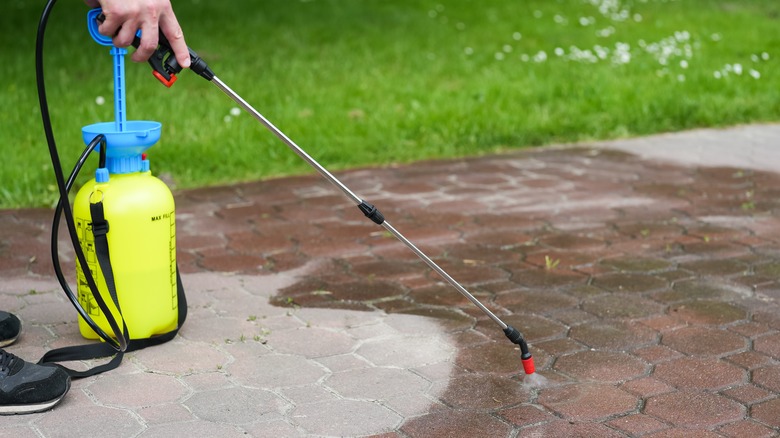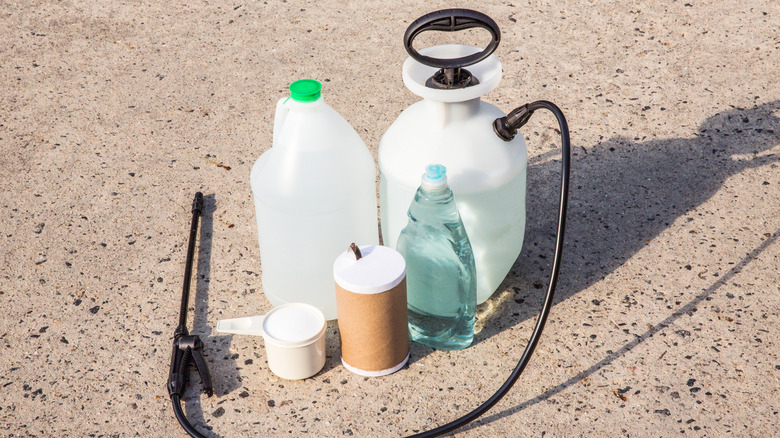Gardeners Should Spray Paths With Vinegar - Here's The Good Reason Why
Gardeners are often an experimental bunch. We're open to growing new plants, trying different gardening methods, and engaging in trial and error. The stakes are usually low, and the rewards can be high. When it comes to getting rid of weeds, we have an assortment of options. Sometimes our gardening foe is so unyielding that we have to use the most intense commercially available chemical sprays on the market. Other times, we have the flexibility to try less potent — but still effective — DIY approaches, like this tried and true solution that works on weeds in a gravel driveway. Bonus points if you're using common household products.
One common DIY option involves vinegar, which has long been used by gardeners and homeowners to clean rusty outdoor furniture, to prolong the life of cut flowers, and to increase soil acidity. As a contact herbicide, vinegar will kill the part of the plant that it touches, but will not be absorbed by the entire plant (meaning, the roots will not be affected). As a result, vinegar is most effective on small, young plants found in the cracks of pathways, sidewalks, and in gravel, where weeds typically don't have enough dirt or space to grow too large.
Spraying vinegar in these areas also lowers the risk that other plants will be unintentionally affected. For example, if you try to kill weeds in a flower bed with vinegar, you have a higher risk of accidentally spraying the flowers you want to keep. On a pathway or driveway, you likely aren't spraying within inches of other plants.
Why and when vinegar is effective as a weed killer
Using vinegar as a weed killer isn't a one-size-fits-all solution. Household vinegar, also known as acetic acid, typically has a 5% concentration. At this level, vinegar is generally safe for our typical uses within the home, whether in food or as a cleaning agent — though it should still be used with caution. However, the concentration of acetic acid jumps up to between 10% and 20% in commercial herbicidal sprays. At this percentage, vinegar can cause severe skin and eye damage. That said, you shouldn't discount the efficacy of the less concentrated version as an herbicide just yet.
As we mentioned before, vinegar at a 5% concentration is an eco-friendly way to quickly kill young, small weeds, especially annual broadleaf varieties. The fewer the leaves, the better, indicating a younger weed. Vinegar is less effective on perennial weeds, which are more likely to sprout again because their roots have become more established over time. Regardless of the type of weed, remember that vinegar is a contact — and not systemic — herbicide, so you will likely need to spray multiple times, especially if you've used this weed killer before a rain.
To try this method, pour a gallon of vinegar (5% concentration) into a bucket and stir in 1 cup of salt until dissolved. Mix in 1 tablespoon of liquid dishwashing soap to increase the solution's ability to stick to the weeds. Pour this into a plastic spray bottle or large sprayer and apply it to your weeds on a dry, sunny day. Make sure it's not windy out, as even a slight breeze could blow the vinegar solution onto other plants. Always take extra precaution by wearing goggles, gloves, and other protective gear.

